Blade belongs in the grand pantheon of vampire films. This epic adventure set a new standard for all action movies while simultaneously heralding fresh heights for genre hybrids. Not to mention, Blade proved comic book cinema could make millions with a tone many future adaptations would emulate.
First seen in “The Tomb of Dracula”, a 1973 Marvel comic book, the character was originally conceived by Marv Wolfman and Gene Colan. For decades after, the vampire hunter would show up in various Marvel comics, occasionally getting his own solo run now and again. Although comic books would eventually follow the film’s lead, Blade’s backstory has remained fairly consistent over the decades.
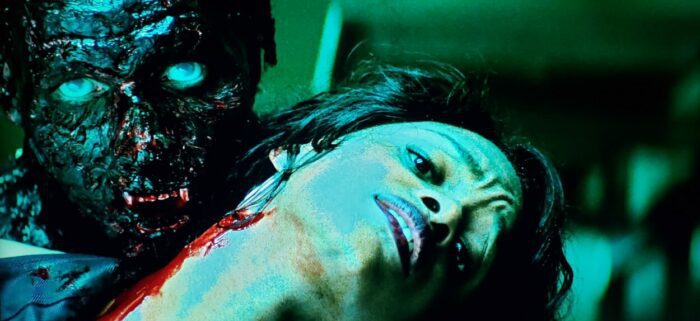
While pregnant, his mother is attacked by a vampire. Though the assault kills her, it causes her unborn child to transform. Imbued with powers of vampirism like strength and speed, but none of the weaknesses such as sunlight, silver, or garlic—Blade becomes the Daywalker, a bogeyman whom all bloodsuckers fear.
Hollywood had been eying the character for quite a while. In the 1980s, when New World Pictures owned Marvel, the studio hired Bill Rabkin and Lee Goldberg to write a script reminiscent of Sergio Leone westerns. Variety magazine reported in the early 1990s that rapper L.L. Cool J was being considered to play Blade in a then developing film. However, it wouldn’t be until Marvel filed for bankruptcy that any adaptation reached production.
Adam B. Vary, a reporter with Variety said, “In the ‘90s, Marvel Entertainment was in such dire straits that they kind of needed money from anywhere.”
This led to them selling off film rights. Seeing an opportunity, screenwriter David S. Goyer and producer Peter Frankfurt began pitching an idea for a trilogy inspired by Blade. New Line Cinema greenlit their proposal. Action star Wesley Snipes, whom Goyer always envisioned in the role, eventually came onboard.
![[L to R] Wesley Snipes, Kevin Patrick Walls, and N'Bushe Wright as Blade, Officer Krieger, and Dr. Karen Jenson in Blade (1998). Screen capture from the New Line Cinema film.](https://filmobsessive.com/wp-content/uploads/2023/08/20230814_230030-700x334.jpg)
However, he wouldn’t simply be acting. Blade became the first film by Snipes’s production company Amen Ra. Being a producer allowed him to help keep the adaptation action oriented and R-rated. It also meant steering design considerations such as Blade’s costume. Specifically, maintaining mobility in order to showcase the action star’s physicality.
The plot is old hat when it comes to comics. Deacon Frost is a ruthless villain hellbent on resurrecting an ancient deity for the purpose of world domination. Meanwhile, Dr. Karen Jenson is sucked into the shadow world of vampires and the few who hunt them. Blade is her only chance to stay alive, and perhaps she can cure his ever-growing thirst for human blood.
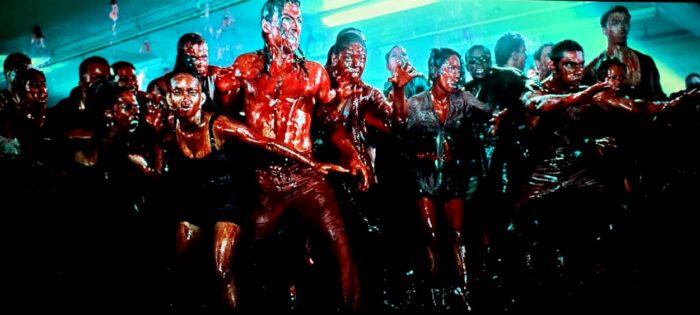
Yet, this isn’t some gothic tale like Francis Ford Coppola’s Bram Stoker’s Dracula (1992) or Anne Rice’s Interview with a Vampire (1994). The film’s opening blood rave full of fanged denizens drenched in dripping red ensures audiences understand this is not the Bela Lugosi breed. These are a vicious, anarchist form of the classic creature. One that revels in death and destruction with wild abandon. But equally vicious is vampire hunter, Blade.
The epic stylization of violence that would become common after The Matrix (1999) technically begins with Blade. Outside of animation, few if any films featured the kind of frenetic combat found in this movie. Previous action heroes tended to be blunt instruments pummeling opponents in a sledgehammer ballet punctuated by a bullet barrage. Obviously taking a page from Chinese martial arts movies, Blade contains marvelously choreographed set pieces showcasing high octane hostilities, something truly unique at the time. Enhanced by a pulse pounding soundtrack featuring tracks like Pump Panel’s acid techno remix of “Confusion”—Blade is a thrill from start to finish.
Slaying at the box office, the movie stopped filmmakers from fretting over lost revenue due to darker tones. Keep in mind, Blade arrived after a shift in comic book cinematic content. The success of Tim Burton’s Batman movies may have shown such adaptations could be profitable, however, the darker aspects of Batman Returns (1992) troubled advertisers and parents alike. Worried about alienating ad revenue, studio execs pushed Burton away in favor of the lighter direction Joel Schumacher would take the franchise. While there’s a case to be made films like Batman Forever (1995) capture the Silver Age vibe, they didn’t resonate with audiences as well as Burton’s vision. And it wouldn’t be until Blade came ripping that studios saw dollar signs in darkness.
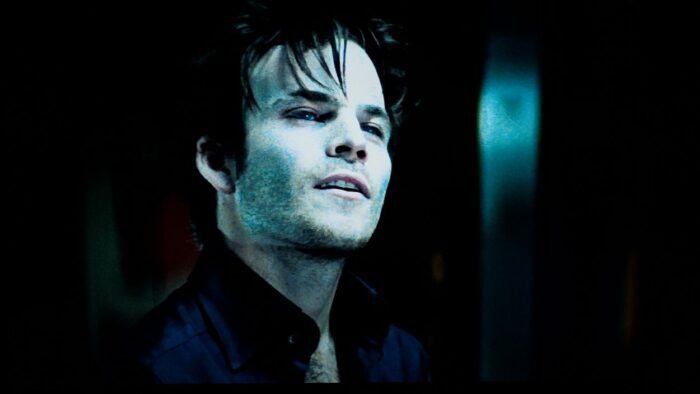
It doesn’t hurt that the 1990s also saw an uptick in films markedly influenced by German Expressionism. Alex Proyas obviously spearheaded this trend with The Crow in 1994 and Dark City in 1998. Voluptuously gritty cities engulf their occupants in a murky, dreamscape hinting only at nightmares. And Blade takes that torch into the action arena for brooding boundless bloodshed.
Visually, Blade is a slick film. Look no further than Wesley Snipes headed to his car after the opening killing spree to see both a sense of his Shaft-like coolness but also his isolation. Although a certain gray grimness saturates much of the movie, color is used remarkably well. Thanks to cinematographer Theo van de Sande, there’s a real sense of various moments being distinct. The shadowy vampire world with its muted neon lighting is easily distinguishable from the gun metal garage where vampire hunters prepare themselves. Day and night are also markedly different enhancing that sense of sunset ushering in a whole other world.
Set design is no less appreciable. The areas inhabited by Deacon Frost and his cohorts speak to a generation embracing modernity, having traded in castles for their contemporary counterpart, the skyscraper. Meanwhile, elder vampires meet in a minimalistic, cave-like boardroom. Even Blade’s own life is centered around a garage full of D.I.Y. vampire murder means—almost zero sign of creature comforts; his whole life is the hunt.
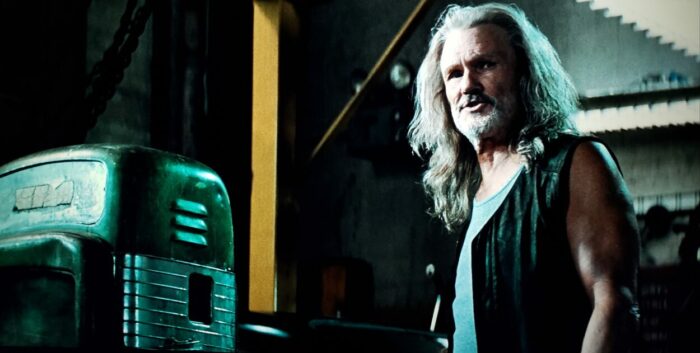
Similar dedication can be seen in the performance by Wesley Snipes. He never broke character during filming and even gave interviews as Blade.
Lyndon Nicholas wrote for Collider that this “signified to audiences… these characters and films can and should be taken seriously as stylized pieces of art and not just replications of their favorite comic book issues.”
It certainly helps that the rest of the cast does an equally impressive job. The illimitable unique presence of Udo Kier as a vampire elder. N’Bushe Wright as the good doctor braving this dark new reality. The comical yet terrifying Quinn portrayed by character actor Donal Logue. Country singer turned actor Kris Kristofferson brought to life Abraham Whistler, an aged vampire hunter and Blade’s surrogate father. Finally, Stephen Dorff as Deacon Frost, a Nosferatu who seems inspired by a Bret Easton Ellis novel—recklessly wicked in pursuit of his own satisfaction.
N’Bushe could be curious and naïve, asking questions the audience might, but also believably growing into a vampire hunter herself. Kristofferson easily conveyed a world-weary warrior who remained dangerous despite injury and age. Stephen Dorff is casually charming while equally chilling in his portrayal of a scheming villain dangerous to human and vampire alike.
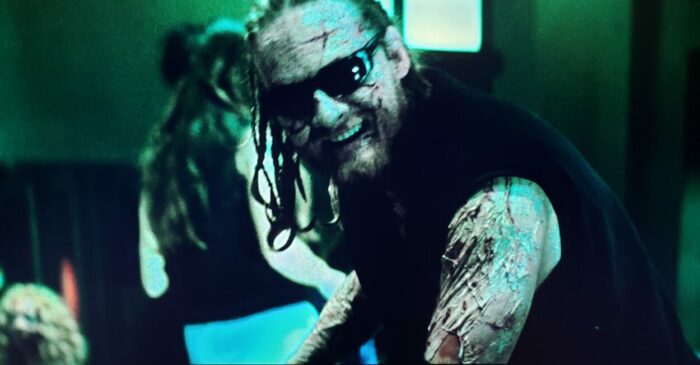
Director Stephen Norrington ably pulled all these pieces together — acting, visuals, and action. Although several directors were approached before him, such as Sam Raimi and David Fincher, he seemed to understand the vision for Blade best. Having worked on creature effects for movies such as Alien 3 (1992) and after directing his first film Death Machine (1994), Norrington’s experience allowed him to blend story and character with eye-catching action.
Still, despite box office success, the film was not a critical darling. Charles Taylor wrote, “Blade in no way resembles a good movie.” Dennis Harvey penned the opinion, “Though slick and diverting in some aspects, increasingly silly pic has trouble meshing disparate elements — horror, superhero fantasy, straight-up action — into a workable whole.” Every negative review laments the lack of emotion in the titular character while reviewers roll their eyes at the simple plot.
Granted, it’s fair to say Blade, the character, lacks a lot of emotional expression.
Wesley Snipes even said the character “isn’t going to lend itself to a great deal of emotional depth… there’s some acting involved in creating the character and making him believable and palatable.”
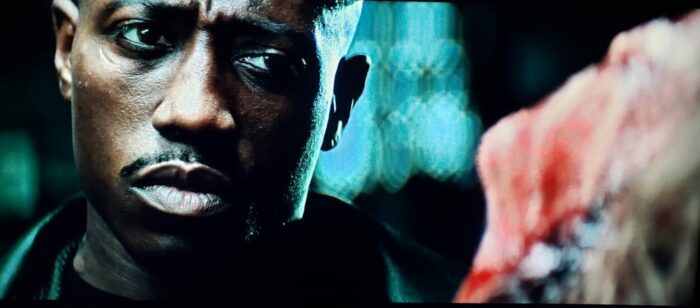
He’s cold to the point of seeming heartless. However, this exterior cracks and becomes tragic when—spoiler alert—his surrogate father, Whistler, is killed. The audience is then presented with someone grief stricken who, through the course of his life and intentional deadening in order to be the murder machine he is, has no way of expressing the love, loss, and sorrow of his situation. What then follows is an explosive violent outburst where Blade vengefully slaughters his way through vampiric hordes.
This kind of emotional subtext may have escaped critics like Charles Taylor, and I dare say it isn’t exactly a stroke of subtle genius. Yet, it does undermine any notion the movie is without some degree of depth. Blade may not be complex, but plot complexity can be a distraction from character. Looking for something Shakespearean then scoffing when it’s not present, negative critics miss simple yet meaningful moments in Blade.
It’s also safe to read into the film to a certain degree. For instance, although the movie doesn’t spend a third of its runtime dwelling on the matter, there are clear implications of prejudice throughout. Despite being a vampire, Deacon Frost is considered a lower form of such entities by elder vampires who were born bloodsuckers. Furthermore, in “Daywalkin’ Night Stalkin’ Bloodsuckas: Black Vampires in Contemporary Film,” Frances Gateward compared Blade to the tragic mulatto.

Gateward wrote, “Blade’s crisis of identity in the film is in the vein of tragic mulatto, one of the staple Black stereotypes of classic Hollywood cinema. More often than not a sympathetic character… caught in an identity crisis, in a liminal space between the two races.”
Obvious racial dynamics can be presumed with an African American male in the lead. Something David Goyer pressed for when studio execs asked if Blade could be white. Yet, even subtler elements emerge when considered in a certain light. Take what Robyn Wiegman wrote in “Feminism, ‘The Boyz’, and Other Matters” observing that “the African American male is stranded between the competing… logics of race and gender. Denied full admittance to the patriarchal province of the masculine through the social scripting of blackness as innate depravity and occupying an enhanced status through masculine privilege in relation to black women.” Something Brady Simenson finds evident in the portrayals of Dr. Jenson, Blade, and his mother, writing about it in the article “Blade and the Power of Liminal Privilege”.
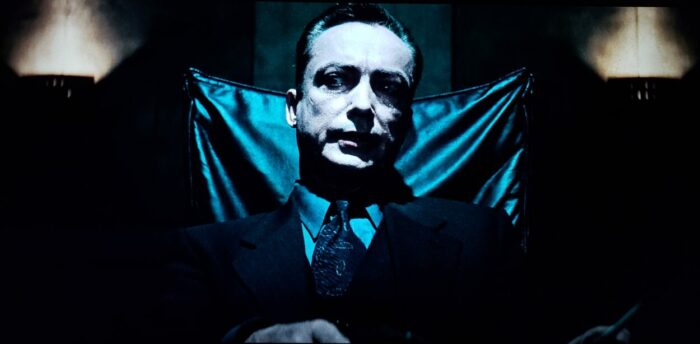
That isn’t to say Blade is an intellectual masterpiece. However, there’s more to the film’s minimalist narrative than negative reviews imply. Even if one doesn’t want to see such layers, the movie is still an action extravaganza blending horror and superhero fantasy into cinematic gold.
From 1921’s release of Drakula halála, a lost Austrian silent film, to The Last Voyage of the Demeter, there isn’t a decade without a big-budget vampire movie. Some become cult classics like Blade. Others are better left forgotten like Blade: Trinity. Third in the franchise trilogy, it serves as a reminder films are so often lightning in a bottle replicating what works isn’t simply a matter of echoing the first feature.
Still, the first movie’s success encouraged Marvel’s foray into film. There’d be no MCU without Blade, so it makes sense a reboot which will include the character in that cinematic universe has been in the works since 2019. Starring two-time Oscar winner Mahershala Ali, it’s been repeatedly pushed back, but currently has a release date of February 14th, 2025. While fans of the original anxiously await how the MCU reimagines the Daywalker, it’s a high bar to clear. Fortunately, the blueprint is there. After all, Marvel’s already been following it for about twenty-five years.


